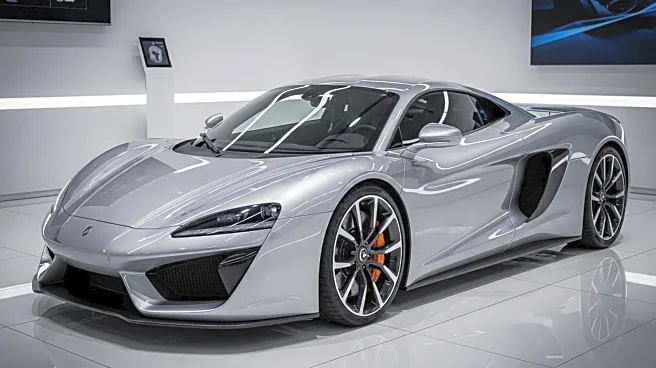What is the story about?
What's Happening?
Aston Martin has introduced its latest model, the DB12 S, a high-performance variant of the DB12. The DB12 S boasts a 690-horsepower engine, marking a significant upgrade from its predecessor. The vehicle features reworked throttle pedal software mapping and an upgraded ZF 8HP75 eight-speed automatic transmission for improved responsiveness. Additionally, the DB12 S includes optional carbon ceramic brakes, enhancing its braking efficiency under stress. The model follows the lineage of previous Aston Martin models such as the DB9 and DB7, and is designed to offer a more aggressive driving experience.
Why It's Important?
The introduction of the DB12 S represents Aston Martin's continued commitment to innovation and performance in the luxury sports car market. This model is likely to appeal to enthusiasts seeking high-speed capabilities and advanced engineering. The enhancements in the DB12 S could strengthen Aston Martin's position in the competitive automotive industry, potentially increasing its market share among luxury car manufacturers. The focus on performance upgrades may also influence future designs and technologies within the sector.
What's Next?
Aston Martin may continue to develop and release high-performance variants of its existing models, leveraging the technological advancements seen in the DB12 S. The automotive industry could see increased competition as other manufacturers respond with their own innovations. Consumer feedback and sales performance will likely guide Aston Martin's future strategies in model development and market positioning.
Beyond the Headlines
The DB12 S's introduction could have broader implications for the luxury car market, including potential shifts in consumer preferences towards more performance-oriented vehicles. The emphasis on advanced engineering and technology may also drive further research and development in automotive design, influencing industry standards and practices.
AI Generated Content
Do you find this article useful?
















